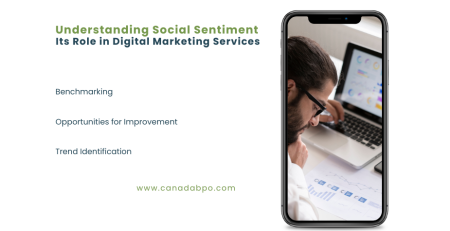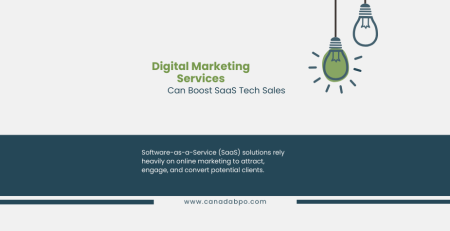Google Search Optimization, often referred to as SEO (Search Engine Optimization), is the practice of enhancing your website’s visibility on Google and other search engines to drive organic traffic and achieve higher rankings. As search algorithms continue to evolve, staying updated with the latest SEO practices is crucial for success. In this blog post, we’ll explore effective Google Search Optimization strategies to help you improve your search engine rankings and drive targeted traffic to your site.
1. Understand Google’s Ranking Factors
Google uses a complex algorithm to determine the ranking of web pages. While the exact criteria are not publicly disclosed, several key factors are known to influence rankings:
- Content Quality: High-quality, relevant content that addresses user intent is crucial for ranking well. Google prioritizes content that provides value and answers users’ questions comprehensively.
- Backlinks: Quality backlinks from reputable sites signal to Google that your content is authoritative and trustworthy.
- Technical SEO: Factors such as site speed, mobile-friendliness, and proper indexing are essential for optimizing your site’s technical aspects.
Pro Tip: Stay updated with Google’s algorithm updates and adjust your SEO strategy accordingly to maintain and improve your rankings.
2. Conduct Thorough Keyword Research
Effective keyword research is the foundation of Google Search Optimization. Identifying the right keywords helps you understand what your target audience is searching for and how to tailor your content to meet their needs.
- Keyword Tools: Utilize tools like Google Keyword Planner, SEMrush, and Ahrefs to discover relevant keywords and analyze their search volume, competition, and trends.
- Long-Tail Keywords: Focus on long-tail keywords that are more specific and less competitive. These keywords often have higher conversion rates as they target users with more specific intents.
- Competitor Analysis: Analyze your competitors’ keyword strategies to identify gaps and opportunities for your own SEO efforts.
Pro Tip: Regularly update your keyword strategy based on changing search trends and user behavior.
3. Optimize On-Page Elements
On-page optimization involves refining various elements of your web pages to enhance their relevance and visibility in search results. Key on-page factors include:
- Title Tags: Craft compelling and keyword-rich title tags that accurately describe the content of your pages.
- Meta Descriptions: Write engaging meta descriptions that summarize the content and encourage users to click through to your site.
- Header Tags: Use header tags (H1, H2, H3) to structure your content and make it easier for both users and search engines to understand.
Pro Tip: Ensure that your title tags and meta descriptions are unique for each page and include primary keywords.
4. Create High-Quality, Engaging Content
Content is king in the world of SEO. Producing high-quality content that resonates with your audience is essential for driving traffic and improving search rankings.
- Content Formats: Diversify your content formats, including blog posts, infographics, videos, and case studies, to engage different types of users.
- User Intent: Focus on creating content that addresses the specific needs and queries of your target audience. This includes providing actionable insights, solutions, and value.
- Content Updates: Regularly update and refresh your content to keep it relevant and aligned with the latest industry trends.
Pro Tip: Use tools like Google Analytics to track content performance and identify areas for improvement.
5. Enhance User Experience (UX)
User experience plays a significant role in Google’s ranking criteria. A positive UX ensures that visitors can easily navigate your site, find the information they need, and have a satisfying experience.
- Mobile Optimization: Ensure your website is fully optimized for mobile devices, as Google prioritizes mobile-friendly sites in its rankings.
- Site Speed: Improve your site’s loading speed to reduce bounce rates and enhance user satisfaction. Tools like Google PageSpeed Insights can help you identify performance issues.
- Clear Navigation: Design a user-friendly navigation structure that allows visitors to find relevant information quickly and easily.
Pro Tip: Conduct regular UX audits to identify and address any issues that may affect user experience.
6. Build High-Quality Backlinks
Backlinks are a crucial component of SEO, as they signal to Google that your content is authoritative and trustworthy. Building high-quality backlinks can significantly impact your search rankings.
- Guest Blogging: Write guest posts for reputable industry blogs and include backlinks to your site.
- Influencer Outreach: Collaborate with influencers and industry experts to earn backlinks from their content.
- Content Promotion: Share your content on social media and other platforms to increase its visibility and attract natural backlinks.
Pro Tip: Focus on acquiring backlinks from relevant and authoritative sources within your industry.
7. Implement Local SEO Strategies
For businesses targeting local customers, local SEO is essential for improving visibility in local search results. Optimizing for local search helps attract customers in your geographic area.
- Google My Business: Claim and optimize your Google My Business listing with accurate information, including your business name, address, phone number, and hours of operation.
- Local Keywords: Include local keywords in your content, meta tags, and titles to target users searching for businesses in your area.
- Local Citations: Ensure consistent NAP (Name, Address, Phone Number) information across all local directories and listings.
Pro Tip: Encourage satisfied customers to leave positive reviews on your Google My Business listing to enhance your local credibility.
8. Monitor and Analyze SEO Performance
Regularly monitoring and analyzing your SEO performance is crucial for understanding what’s working and where improvements are needed.
- Analytics Tools: Use tools like Google Analytics and Google Search Console to track your site’s traffic, user behavior, and search performance.
- Key Metrics: Focus on key metrics such as organic traffic, keyword rankings, bounce rates, and conversion rates to evaluate the effectiveness of your SEO efforts.
- Adjustments: Based on your analysis, make data-driven adjustments to your SEO strategy to optimize performance and achieve better results.
Pro Tip: Set up regular SEO reports to stay informed about your website’s performance and trends.
Google Search Optimization is an ongoing process that requires a combination of strategic planning, technical expertise, and continuous improvement. By understanding Google’s ranking factors, conducting thorough keyword research, optimizing on-page elements, and focusing on high-quality content, you can enhance your website’s visibility and drive more targeted traffic.
At Canada BPO Services, we craft effective SEO strategies tailored to your business needs. Contact us today to learn how we can help you master Google Search Optimization and achieve your digital marketing goals!











Leave a Reply